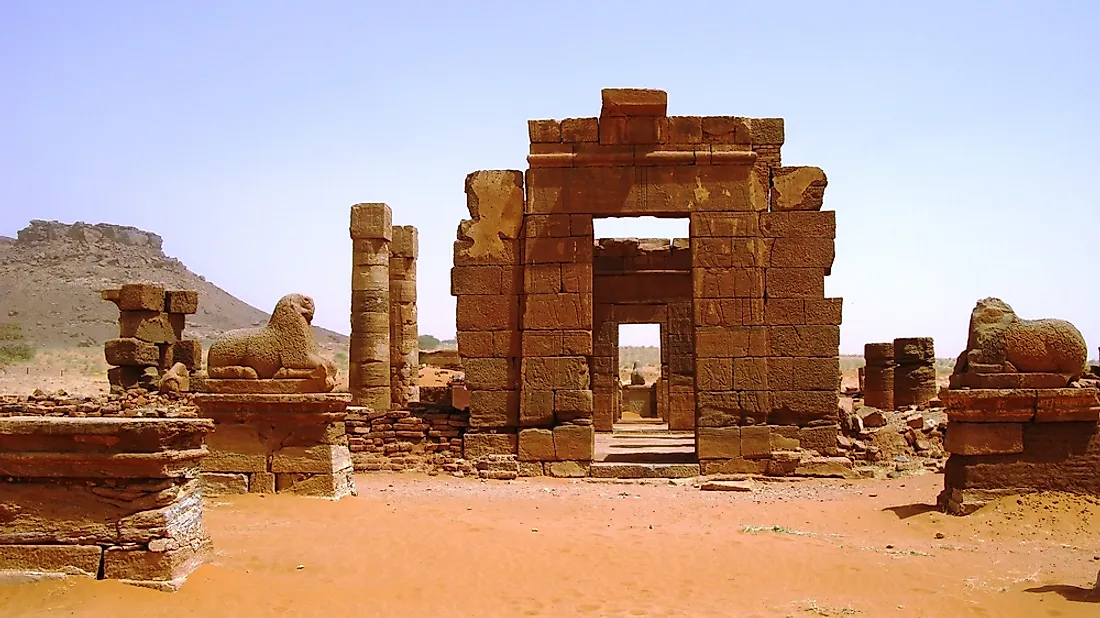The Culture Of Sudan

Sudan is a Northeast African country with varied geography featuring deserts, mountains, sea coasts, and more. The geographical variations in the country have given birth to regional cultural differences. The Sudanese culture has also evolved over centuries of social and political changes. It also reflects the ethnic diversity of the country’s population.
Ethnicity, Language, And Religion
Sudan is home to around 43,120,843 individuals. About 70% of the population are Sudanese Arab. Ethnic minority communities residing in the country include Fur, Nuba, Fallata, Beja, and others. Arabic and English are the official languages of Sudan. Nubian, Fur, and other minority languages are also spoken. Most of the Sudanese people are Sunni Muslims. A small community of Christians also live there.
Cuisine
The cuisine of the country is as varied as the country’s geography and diverse ethnic communities. Some foods are, however, consumed widely like Kissra, a type of bread which is the staple of the Sudanese diet. It is made of corn or durra. Kissra is usually consumed with a stew and together constitute the most popular everyday meal of Sudan. Stews generally have dried meat, peanut butter, spices, and dried onions as the ingredients. Porridge made of corn or wheat might also be consumed with stews. Soups are also an important part of the Sudanese cuisine. Kawari is the most popular soup and is made of cattle's or sheep's hoofs, spices, and vegetables. A dish made of banana paste called Moukhbaza is widely eaten in east Sudan. Dairy and milk are fundamental to the diet of most Sudanese. An abundance of water bodies in southern Sudan brings a variety of fishes to the Sudanese table in this region. Some popular beverages of Sudan are fruit juices, a drink called Hilumur made of corn flour and spices, Sudanese coffee, fruit, and herbal teas, etc.
Literature And The Arts
Unlike many other African countries, Sudan has a vast repertoire of written literature with the oldest ones dating from 700 BCE and was written in the Meroitic script. Like other countries in the continent, Sudan also has a rich heritage of oral literature. Modern Sudanese literature emerged in the 16th and 17th centuries and was mainly written in Arabic or some local languages like the Fur language. Oral literature from Sudan includes mythological stories and religious tales. The former is based on magic, superstition, and fanciful scenes. The latter has a religious overtone and are usually related to praising Muhammad. Modern Sudanese literature focusses on social realist and other themes.
The art of Sudan reflects its centuries-old history. The various kingdoms that ruled the land and the diverse ethnic groups inhabiting the country have all contributed to the Sudanese art. The Bambara people of Sudan are famous for their wood-carved antelope headdresses that have immense cultural significance. Terracotta sculptures from Sudan are also noteworthy. Mask-making, pottery, basket-weaving, etc., are some other skills of Sudanese craftsmen.
Performance Arts
Sudan has a rich heritage of music and dance that have suffered greatly since the implementation of the Sharia law in 1989. Many of the country’s poets were imprisoned while others fled to neighboring Egypt. Traditional and folk music like the Sufi Dervishes, Haqibah, Southern Sudanese folk music, and Northern Sudanese lyrical music also lost their prominence in modern-day Sudan. Interestingly, music influenced by the West has gained popularity in the country today. Popular music, hip hop, Southern Sudanese modern music, and modern tribal music are popular among the Sudanese youth today, especially in the urban areas.
Sports
Football is the most popular spectator sport in Sudan. The country’s sportsmen also excel in the field of athletics. Basketball, volleyball, handball are other popular games played in the country. Sudan has one of Africa’s best basketball teams. The country was also among the first few teams to start the game of football in Africa. The other teams included South Africa, Ethiopia, and Egypt. The African Cup of Nations was held for the first time in 1956 in Sudan. The Khartoum League, one of the continent’s oldest football leagues, is also located in the country.
Life In Society
Sudanese society is patriarchal in nature. Gender-based roles are well-defined. Women are expected to look after the household and bring up children. Men are regarded as the primary breadwinners. Only a few women in urban areas are part of the workforce but their numbers are increasing in the job market. In rural areas, women assist men in agricultural work to a great extent. Men and women usually live their separate lives where they socialize with members of the same sex.
Arranged marriages are the norm in Sudanese society. Marriages between cousins are often preferred. There is usually a significant age difference between the bride and groom. A brideprice is paid by the groom to the bride’s family before marriage in exchange for their daughter. Polygamous marriages were more common in the past. Although divorces were unheard of in the past and regarded as a taboo, the scenario is gradually changing. Extended families are more common in rural areas than in urban localities. Islamic law determines the inheritance of property in the country.
Children are highly valued in Sudanese society. They are taught gender-based skills at an early age. Several initiation rights mark their journey into adulthood. Sudan has a low but improving literacy rate. Religious schools teaching Islamic values are found in large numbers.











